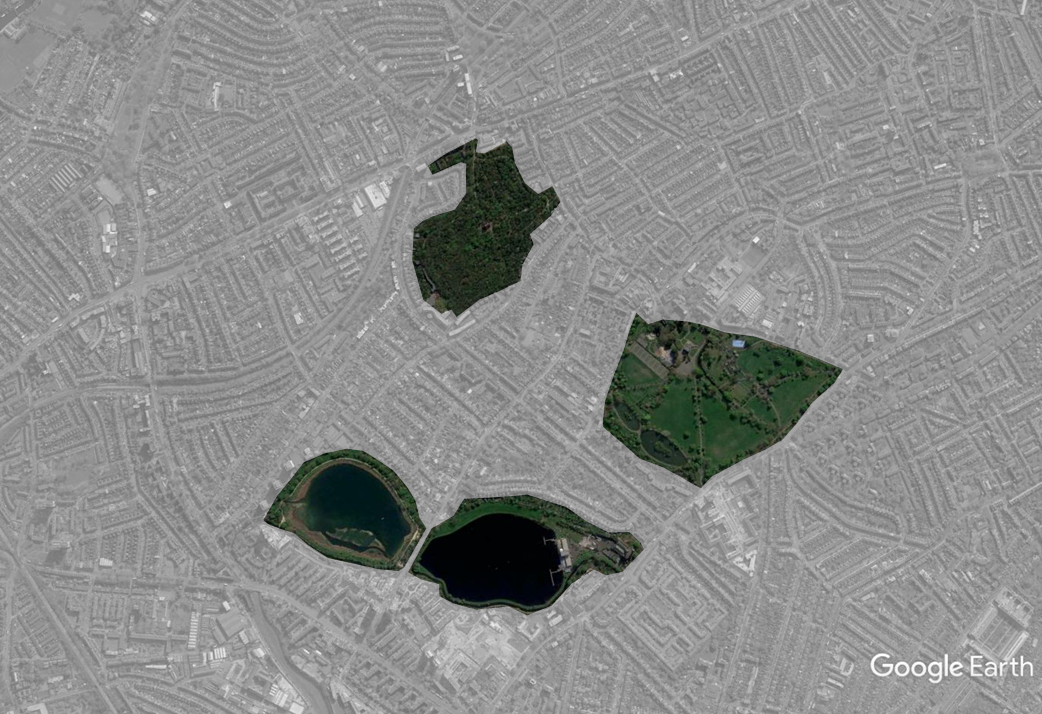Birds flock to big urban parks

An Eastern Wood-Pewee, a bird frequently seen in urban greenspaces in eastern North America during migration. A landbird, which relies on tree cover within urban greenspaces
Image: Corey Callaghan© Corey Callaghan
We’ve previously discussed the value of citizen science data for assessing avian biodiversity within urban greenspaces. Birdwatchers using eBird submit lots of bird lists, many of which come from their local “patch” – and many of these patches are located in urban areas. We took advantage of this dedication by eBirders to address some longstanding questions of urban ecology: what predicts avian biodiversity in urban greenspaces?

A White-faced Heron – a frequently encountered waterbird in urban greenspaces in Australia, often near water. This photo was taken in Centennial Park, Sydney, New South Wales
Image: Corey Callaghan© Corey Callaghan
Urban greenspaces are widely defined, but we defined a greenspace in our analysis as a distinct area of vegetation within the city limits that was completely surrounded by urban area and easily delineated on all sides. Therefore, it couldn’t be adjacent to large natural areas or water bodies. We searched a global list of the world’s largest cities and the urban greenspaces within. Based on our previous research, we investigated urban greenspaces with at least 250 submitted eBird checklists, and ended up with a total of 112 greenspaces from 51 cities. We then assessed a suite of potential explanatory variables relating to both the patch and the surrounding landscape, including the percent of water cover, percent of tree cover, and the size (area) of the greenspace.

Examples of different urban greenspaces with lots of water, trees, and open areas
Image: Google Earth Pro© Google Earth
Above all else, the area of the greenspace was the most important predictor of bird diversity. The larger the greenspace, the more species were present, and this was the case for both landbirds and waterbirds. Moreover, the attributes of the local environment were more important than those of the broader landscape: the amount of water and tree cover within a greenspace was generally more important than the water and tree cover within the surrounding landscape. Unsurprisingly, we also found that waterbirds were most strongly associated with the percent cover of water in a greenspace while landbirds were most strongly associated with the percent cover of trees.
Urban greenspaces have many uses, a lot of which are focused on active human recreation. However, we should acknowledge that both birds and birdwatchers also frequent urban greenspaces, and it is therefore important to understand how to best protect and design the richest urban greenspaces – both for bird diversity and human use. Our results suggest that as urbanization continues, future developments should set aside large urban greenspaces as these are most valuable for urban birds. And eroding large greenspaces for transport or other infrastructure is likely to erode their biodiversity value. We also demonstrate the power of broad-scale empirical datasets, collected by citizen scientists, for answering urban ecological questions.
Corey T. Callaghan - PhD Candidate, Centre for Ecosystem Science, UNSW Sydney
Richard Major - Principal Research Scientist, AMRI, Australian Museum
More information:
- Callaghan, C. T., R. E. Major, M. B. Lyons, J. M. Martin, and R. T. Kingsford. 2018. The effects of local and landscape habitat attributes on bird diversity in urban greenspaces. Ecosphere 9(6):e02347. DOI:10.1002/ecs2.2347













